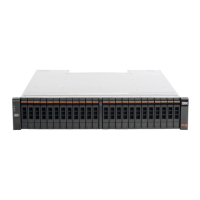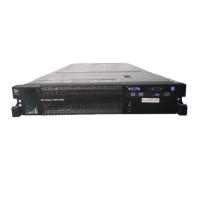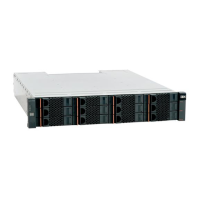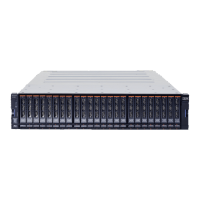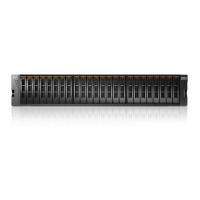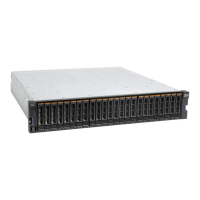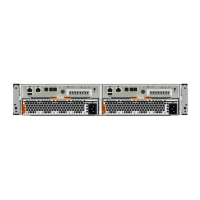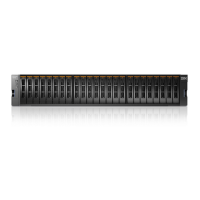Resolving full condition for GPFS file system
Use this procedure when the management GUI reports a critical error when a file
system is 100% full.
About this task
You must have root access to perform this procedure.
Note: If you use GPFS snapshots, the file system locks when it reaches 100%
utilization.
Procedure
To resolve the full condition for the file system, perform the following steps:
1. Review the contents of the GPFS file system.
v If the file system has snapshots, remove the oldest snapshot after verifying
that it is no longer needed. Continue to remove the snapshots from oldest to
newest until the level of free space that you want is achieved.
v If no snapshots exist, perform the following steps:
a. Run the lspool command to determine what storage pool is out of space.
b. Remove files to free up storage.
c. If the mmdf command output shows that there is space in free fragments,
run the sc mmdefragfs command to combine the fragments into full
blocks.
Note: You can run the GPFS defrag command while the file systems are
mounted. However, for better results, unmount the GPFS file system
before performing the defragmentation operation.
2. If there is no space in fragments or if the sc mmdefragfs command does not
free up space, add disks (NSDs) to the file system to create space.
a. Add disks to the file system.
Note: If free space exists in the mdiskgroup then you can modify the file
system by editing it in the GUI or simply running the command: mkdisk
fileSystem size mdiskgroup
For example:
[root@kd01gln.mgmt002st001 ~]# mkdisk gpfs0 10GB 0
(1/4) Creating Storage System volumes
(2/4) Scanning for new devices
(3/4) Creating NSDs
(4/4) Adding disks to filesystem
Successfully created disk
b. If there is no storage space available, contact IBM support.
Analyzing GPFS logs
Use this procedure when reviewing GPFS log entries.
About this task
Note: Contact IBM support if you want to analyze GPFS log entries.
200 Storwize V7000 Unified: Problem Determination Guide 2073-720
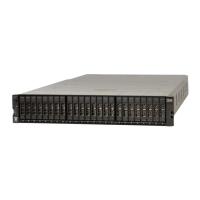
